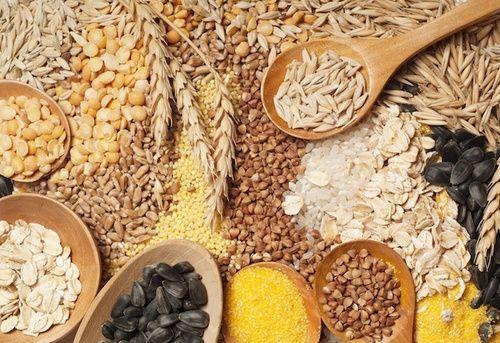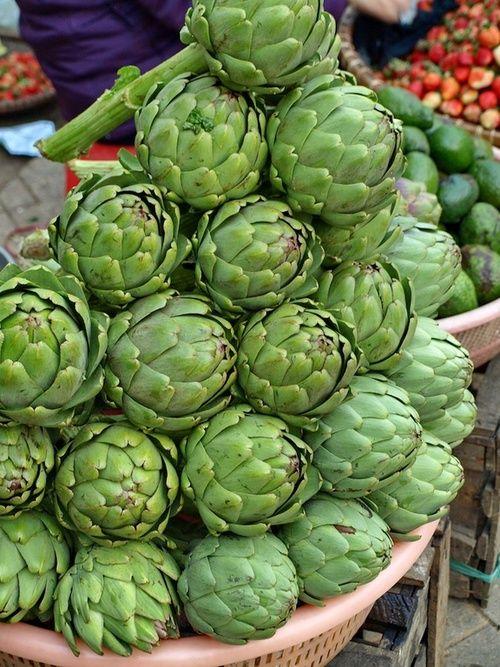Le fibers are essential substances for the proper functioning of the intestine and for the well-being of the whole organism. Finding them and eating them is easy, they are found almost everywhere in the plant kingdom (fruit and vegetables, tubers and legumes). However, there are some foods whose fiber content is much higher than others. Let's find out better.
> Daily requirement
> Foods that contain fiber
> Contraindications
> Fibers in the kitchen
Cereals among the foods rich in fiber

What are fibers
Fibers are non-nutrient substances or better defined as non-starchy complex carbohydrates and are divided into two categories: soluble and insoluble. The appellation a-nutrients it is due to the fact that they do not bring any added value to the body in terms of nutrients.
So why are they so important? Fibers are non-digestible cell residues from plants and resist digestive enzymes produced by the stomach. Thanks to their structure they are able to stimulate intestinal peristalsis favoring its functionality and reducing evacuation times.
A right amount of fiber contributes to the absorption of excess fat ingested with an unbalanced diet (LDL) and helps the bacterial flora to preserve its state of eubiosis (balance) thanks to their consumption. The fibers arrive intact in the intestine (fermentative action in the colon) and act by increasing their volume (and that of the faeces) by absorbing water and that is why it is advisable to drink a lot. It follows the elimination of harmful substances through their intake and subsequent expulsion.
The “barbaric” habits imposed by rather restricted and hasty rhythms of life (habits acquired above all in young people, but not only), due to the lack of a good culinary culture, do not always provide a sufficient amount of fiber. Often the menus do not include them at all but preferring refined and fried first courses of various kinds (at the top of the ranking we find fried potatoes and then the appetizing Milanese).
Soluble fibers regularize intestinal functions and some diseases such as diabetes, obesity and metabolic diseases. They absorb fat (LDL cholesterol) and saziano (which is why it is recommended to eat whole foods especially if you are subjected to a dietary regime and not only for weight loss but also to control blood sugar and therefore diabetes).
This mechanism is possible because the solubility of the fibers has an absorption effect on carbohydrates and lipids. In case of diarrhea, the supply of soluble fiber is a good ally while the regulating action of the intestinal lumen PH protects the intestine from possible infections and also from the formation of colon cancer.
Insoluble fibers they have the ability to increase fecal mass and facilitate peristalsis for its expulsion. The increased rate of intestinal emptying contributes to a greater protection against the colon towards diseases. The impossibility of long-term stagnation of stool in the colon by insoluble fibers removes the risk of toxic substances of involving the intestine in diseases and infections.
Fibers are useful in case of constipation: discover all the natural remedies for constipation

Daily requirement
Daily fiber intake ranges from twenty to forty grams per day. Obviously the proportion is susceptible to the size and weight of the subject and linked to the intake of an adequate intake of liquids.
For the RDA of fiber in children, take into account about five grams of daily fiber by adding one gram and multiplied by age. For the elderly instead the recommendation is to drink a lot and combine moderate and constant physical exercise. In fact, both characteristics seem to fade with age.
Considering the multiple effects of soluble and insoluble fibers, it is also good to take into account the relationship between these. Insoluble fibers will therefore have a greater weight in our diet than soluble fibers.
The top foods where to find fiber
- Whole grains and all the resulting by-products are particularly rich in fiber.
- Brussels sprouts and cabbages in general are rich in fiber and even if they are not always appealing to the finest palates, they can be cooked in various ways and thus be more appreciated.
- Jerusalem artichoke is a very fibrous and also tasty root. It has a high satiating power and is also used as a supplement to sweeten foods to replace sugar. For this reason it lends itself favorably to those who are diabetic.
- All legumes are rich in fiber and this can sometimes cause discomfort to those with sensitive intestines. Unfortunately, legumes have a bad reputation, that of creating intestinal air. This is a side effect dictated mostly by a poor culinary culture and knowledge of our intestine. Legumes should be consumed alone or by carefully choosing the right combinations with other foods and above all by taking care of chewing. Among the legumes, coral beans do not cause intestinal swelling and are much more digestible. in lima beans, on the other hand, the percentage of fiber allows it to be used for weight management since it induces an early sense of satiety, thus pushing to lower the portions of meals. Furthermore, a healthy intestine capable of maintaining its state of balance and porosity does not present this type of problem. It is good to first of all take care of the health of the intestine in order to better assimilate foods and legumes. Removing the peel or soaking them for a long time in water are palliative and not always decisive solutions.
- Avocado is an exotic fruit rich in fiber and with a particularly delicate taste. It is a valuable food rich in good nutrients. Excellent in salads paired with nuts such as walnuts and with tofu or feta.
- Almost everyone likes chestnuts and can be enjoyed in the autumn period, usually roasted, boiled or more greedily glazed throughout the winter season. They are floury and we must therefore reduce their consumption. It is not uncommon that following a feast of chestnuts, symptoms such as stomach ache and air appear that can annoyingly compress the walls of the abdomen, due to its particular composition and the type of fibers contained in them.
- Prunes are excellent solutions for moving the intestines, especially if accompanied by a hot drink. They can create air in case of constipation, that is, if consumed before the intestine is free. It is therefore good to start with a couple of prunes and see how our tummy reacts. They can also be eaten cooked with apples and pears, in the oven or cooked in a pan with their water and the juice of a squeezed lemon. Even fresh, they are great for starting the day and filling up on fiber and vitamins.
- Açaì berries: the fruit is very rich in fibers that regulate the intestine.
Artichokes are also rich in fiber: discover all their properties

Controindicazioni
Those suffering from chronic constipation or with a lazy bowel e the use of fibers is not recommended for celiacs contained in the bran for different reasons. Much better to use natural supplements against constipation. Those belonging to the first two groups must use caution because the fibers contained in the bran are of the soluble type and therefore if the supply of liquids is not sufficient in relation to the proportion of the fibers taken, it can further mark the problem. Celiacs, on the other hand, pay attention to the gluten it contains.
Even in the case of dysentery or colitis it is better to avoid the consumption of insoluble fibers that worsen diarrheal discharges and generally inflame the walls of the intestine, accentuating its discomfort (ulcerative colitis).
The fibers also bind important minerals to themselves and precious for the health of the tissues and especially for the bones such as calcium. Therefore, people who have an advanced osteoporosis situation or who have a tendency to demineralization or who want to prevent the problem must be careful not to exceed their consumption without professional advice to those of competence.
Those who are taking "life-saving" drugs or are on important drug therapy should also be aware that fibers can inhibit the action and efficacy of certain active ingredients contained in drugs. One of these is the drug used to reduce the symptoms of Parkinson's disease.
The fibers in the kitchen
They have a satiating effect and they have no calories (perks for the line). However, good chewing should be respected, which must be slow and thorough.
This consideration, which is often taken for granted, actually plays a fundamental role because it allows finely chop the fibers especially those contained in legumes and to avoid the formation of intestinal gas and related colic that occur in an annoying way causing abdominal pain and the emission of air.
Let's see now how we can distribute a good amount of fiber throughout the day.
A breakfast You can take whole grains such as soy or bread buckwheat, fresh or cooked fruit and a yogurt.
A lunch a first course of whole grains (pasta or rice, especially brown rice which contains more fiber) and a portion of raw and cooked vegetables.
At dinner you will opt for better vegetable proteins such as soy and lentils. In this way we will have acquired a good share of proteins and fibers in a single solution. However, fresh and seasonal vegetables and salads must not be missing.
La fruit it is best to eat it between meals and therefore reserve it for a mid-morning snack or for breakfast.
Cooked or dried fruit is reserved for after dinner (but without exaggerating) and a cup of mallow herbal tea rich in soothing mucilages complete our day dedicated to fiber.
READ MORE
The properties and benefits of bran, a cereal rich in fiber
Other articles on high-fiber foods:
> Foods rich in fiber: what are they?
> Dietary fibers: if you know them, you can use them
> The diet against diverticula is rich in fiber
> Tips for better digesting fiber
> Starchy foods in comparison


























